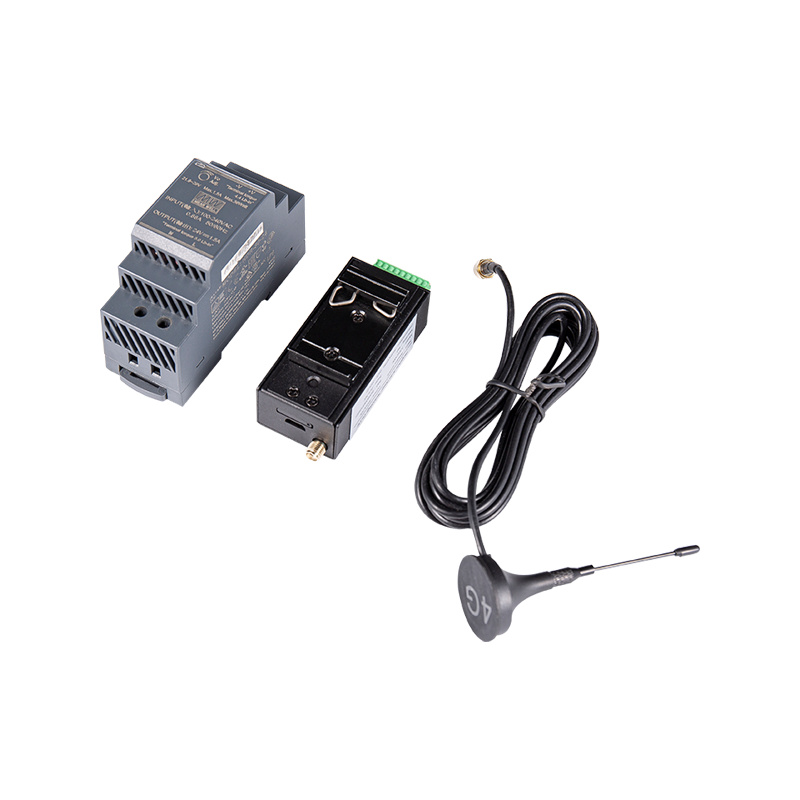What Are DIN Rail Meters and Why They Matter
DIN Rail Meters are energy measurement devices installed on DIN rails, designed to monitor parameters such as voltage, current, power, power factor, and cumulative energy consumption in real time. A DIN rail is a standardized metal track (in compliance with IEC 60715) widely used in electrical control cabinets, distribution boxes, and industrial automation systems.
Compared with traditional panel meters, DIN Rail Meters are compact, easy to install, and simple to maintain, making them widely adopted in industrial, commercial, and building energy management applications.
Main Functions
- Energy Measurement: Records single-phase or three-phase circuit energy consumption
- Real-time Monitoring: Provides live readings of voltage, current, and frequency
- Data Communication: Some models support Modbus, RS-485, and other communication protocols
- Safety Monitoring: Detects grid anomalies such as overvoltage, undervoltage, and overcurrent
Common Parameter Comparison
| Parameter Type |
Typical Range |
Description |
| Voltage Measurement Range |
AC 110–240V / AC 380–480V |
Different ranges for single-phase and three-phase grids |
| Current Measurement Range |
1–100A (direct) or >100A (with CT) |
Selected based on load size |
| Accuracy Class |
Class 0.5–1.0 |
Lower value means higher accuracy |
| Display Type |
LCD / LED |
Some support backlight display |
| Communication Interface |
None / RS-485 / Modbus RTU |
For remote monitoring and data acquisition |
| Installation Method |
35mm DIN rail |
Complies with international standards for quick installation |
Why They Matter
- Energy Management: DIN Rail Meters provide precise consumption data to optimize energy distribution and reduce waste.
- Operational Safety: Real-time monitoring of key electrical parameters helps detect faults early, reducing equipment damage risk.
- Data Traceability: Supports data logging and transmission for analysis and billing verification.
- Space Efficiency: DIN rail installation keeps control cabinet layouts organized and easy to maintain.
Applications of DIN Rail Meters
- Industrial Automation: Monitoring equipment load to prevent overloads
- Building Energy Management: Recording electricity usage by floors or tenants for cost allocation
- Renewable Energy Systems: Tracking generation and grid integration in solar and wind projects
- Data Centers: Monitoring rack power usage to ensure stability
- Public Infrastructure: For distribution monitoring in subway stations, airports, and other large facilities
Benefits of DIN Rail Meters
- High Accuracy: Accuracy class of 0.5 or higher ensures reliable data
- Space-Saving Design: Suitable for compact distribution cabinets
- Real-Time Monitoring: Continuous tracking of voltage, current, and power
- Remote Communication: Some models support RS-485, Modbus, and other protocols for remote data access
- Safety Protection: Detects abnormal currents and voltage fluctuations, reducing equipment damage risks
| Selection Criteria |
Options |
Description |
| Phases |
Single-phase / Three-phase |
Based on grid type |
| Voltage Range |
AC 110–240V / AC 380–480V |
Match system voltage |
| Current Range |
1–100A (direct) or >100A (with CT) |
Depends on load size |
| Accuracy Class |
0.5 / 1.0 |
Higher accuracy for billing or auditing |
| Measurement Parameters |
Voltage, current, power, PF, frequency, energy |
Select according to needs |
| Communication |
None / RS-485 / Modbus RTU |
For remote monitoring and integration |
| Mounting Method |
35mm DIN rail |
Standard control cabinet installation |
Practical Tips
- Plan for future capacity when selecting a model
- Prefer multi-parameter models to reduce future upgrade costs
- Verify communication protocol compatibility with existing EMS systems
- Choose higher protection ratings for harsh environments
Key Features to Look for in DIN Rail Meters
Measurement Capabilities
- Voltage: For single-phase or three-phase circuits
- Current: For load safety and monitoring
- Power: Active, reactive, and apparent power
- Power Factor: For efficiency evaluation
- Energy Consumption: Total consumption for management purposes
Display and Interface
- Display Type: LCD or LED, with some offering backlight
- Language Options: Some support multiple languages for broader usability
- Refresh Rate: Faster updates provide better real-time visibility
Connectivity and Communication
- Local Reading: Direct panel display
- Remote Communication: RS-485, Modbus RTU, and other protocols for EMS integration
- Data Export: Some models support historical data storage and export
Durability and Safety Standards
- Protection Rating: IP20, IP40, or higher for dust and touch protection
- Insulation Class: Ensures electrical isolation for safety
- Operating Temperature Range: Suitable for diverse environments
- Compliance: IEC and other relevant standards for accuracy and safety
Parameter Comparison Table
| Feature Category |
Common Range / Options |
Description |
| Voltage Range |
AC 110–240V / AC 380–480V |
For single or three-phase use |
| Current Range |
1–100A (direct) or >100A (with CT) |
Based on load capacity |
| Accuracy Class |
0.5 / 1.0 |
Lower number = higher accuracy |
| Display Type |
LCD / LED |
LCD often with backlight; LED brighter |
| Communication Protocol |
None / RS-485 / Modbus RTU |
For remote monitoring |
| Protection Rating |
IP20 / IP40+ |
Based on environmental needs |
| Installation |
35mm DIN rail |
International standard mounting |
Selection Insights
- Choose communication-enabled DIN Rail Meters for remote EMS integration
- Higher-accuracy models are best for auditing or billing applications
- In harsh conditions, prioritize higher protection and temperature tolerance
- Opt for models with multi-parameter measurement for scalability
Use Cases of DIN Rail Meters Across Industries
DIN Rail Meters play a significant role in global electrical systems and energy management. With compact design, precise measurement, and flexible installation, they are suitable for a wide range of monitoring applications, from industrial production to commercial buildings.
Hangzhou Antin Power Technology Co., Ltd, established in 2013 and located in Hangzhou, China—known as the "Silicon Valley of Paradise"—is a leading manufacturer and supplier of electricity meters and energy measurement solutions. The company develops and produces DIN rail energy meters, multi-function energy meters, prepaid energy meters, panel meters, and more, widely applied in energy management systems, sub-billing systems, and electrical SCADA systems.
Industrial Automation
- Monitor voltage, current, and power of production equipment in real time
- Analyze energy usage to improve efficiency
- Prevent equipment damage from overloads or voltage fluctuations
| Application |
Voltage Range |
Current Range |
Accuracy Class |
| Heavy-load equipment |
AC 380–480V (three-phase) |
50–200A (with CT) |
0.5 |
| Automated production lines |
AC 220–240V (single/three-phase mix) |
10–100A |
1.0 |
Commercial Buildings & Energy Management Systems
- Record usage for floors, departments, or tenants for cost allocation
- Integrate with EMS for real-time consumption trends
- Improve efficiency and reduce operational costs
| Application |
Voltage Range |
Current Range |
Communication |
| Sub-tenant billing |
AC 110–240V |
5–63A |
RS-485 / Modbus RTU |
| Energy consumption analysis |
AC 220–240V (three-phase) |
10–80A |
RS-485 / Data storage |
Renewable Energy Systems
- Monitor generation output, grid integration, and power factor
- Track system efficiency and optimize settings
- Integrate with SCADA for remote management
| Application |
Voltage Range |
Current Range |
Special Feature |
| Solar PV monitoring |
AC 220–240V |
5–40A |
Reverse power detection |
| Wind power measurement |
AC 380–480V |
20–100A |
Harmonic analysis |
Data Centers & IT Infrastructure
- Record rack and PDU power consumption accurately
- Support high-frequency data refresh for real-time monitoring
- Trigger alerts via EMS integration
| Application |
Voltage Range |
Current Range |
Accuracy Class |
| Rack-level monitoring |
AC 110–240V |
1–32A |
0.5 |
| Distribution room monitoring |
AC 220–240V (three-phase) |
10–63A |
0.5 / 1.0 |
Public Infrastructure
- Monitor critical zone loads in real time
- Improve reliability and prevent power outages
- Support centralized monitoring and data archiving
Leveraging Enterprise Strengths
With strong R&D capabilities, Hangzhou Antin Power Technology Co., Ltd not only delivers high-precision and feature-rich DIN Rail Meters but also ensures seamless integration with multiple EMS platforms, helping users achieve complete energy visualization and optimization.
AT180G-YF Series Three Phase Din Rail Energy Meter







